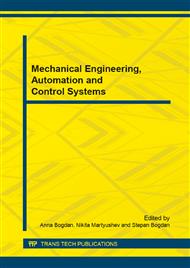p.126
p.132
p.137
p.144
p.150
p.159
p.164
p.169
p.173
Assessing the Metal Consumption for Manufacturing a Conical Part by Hollow Billet Crimp-Expansion and Sheet Blanks Drawing Crimping
Abstract:
The process of hollow conical forming is described for two schemes: crimp-distribution for hollow billets and stretching from sheet billet with subsequent crimping for cylindrical blank. The item thickness varying was investigated for these schemes. Dependency of technological allowance ratio on crimping coefficient and expansion ration for items allowance was investigated. The effectiveness of stretching from sheet billet with subsequent crimping was proven.
Info:
Periodical:
Pages:
150-155
Citation:
Online since:
April 2015
Authors:
Price:
Сopyright:
© 2015 Trans Tech Publications Ltd. All Rights Reserved
Share:
Citation:


